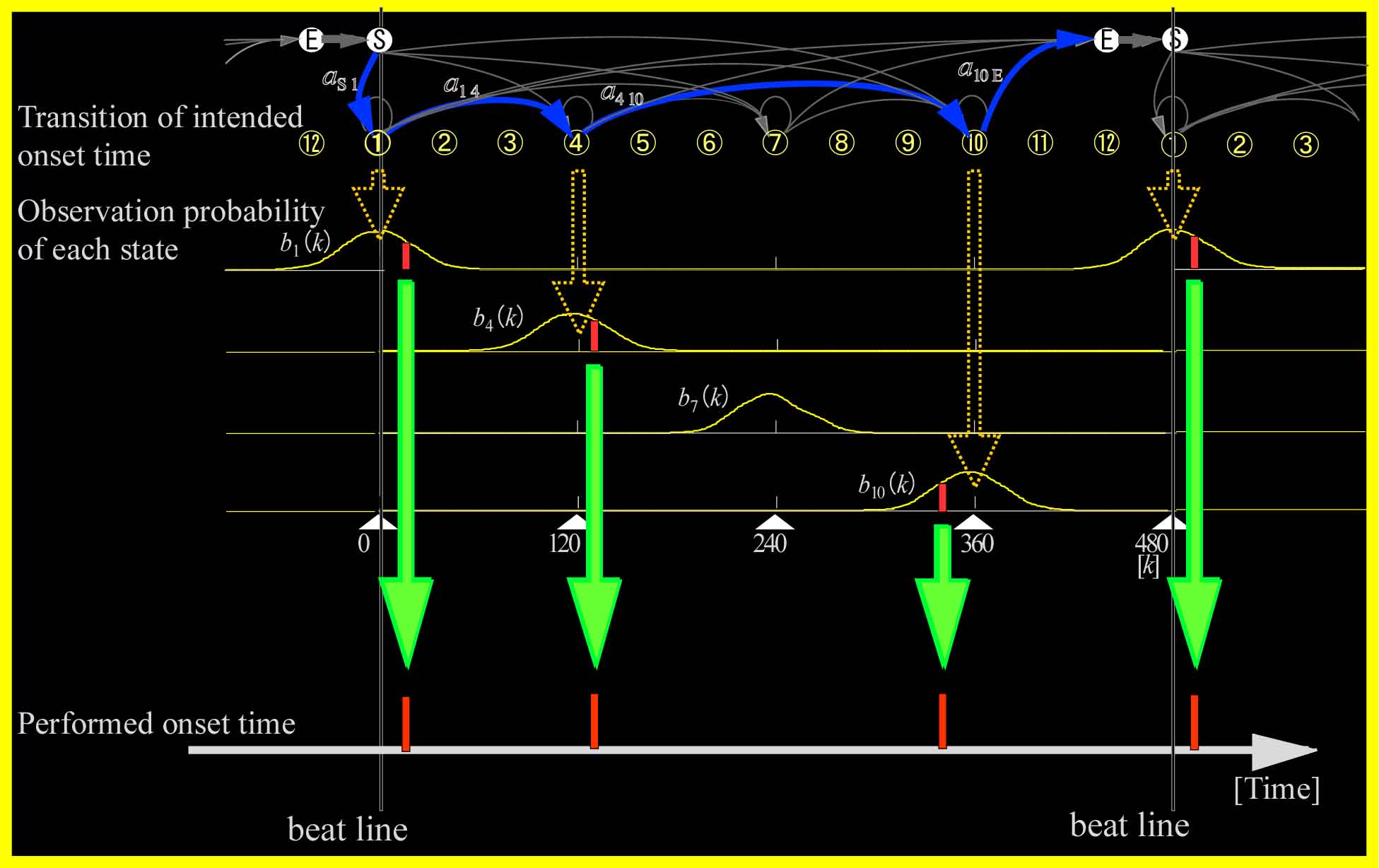This paper describes a method for organizing onset times of musical notes performed along a jam-session accompaniment into the normalized (quantized) positions in a score. The purpose of this study is to align onset times of a session recording to quantized positions so the performance data can be stored in a reusable form. Unlike most previous beat-tracking-related methods focusing on predicting or estimating beat positions, our method deals with the problem of eliminating the onset-time deviations under the condition that the beat positions are given. To quantize polyphonic MIDI recordings of jam session, we propose a method that uses hidden Markov models for modeling onset-time transition and deviation. Its main advantage is that a player’s performance is quantized using a model learned statistically from session recordings of that player. Experimental results show that our model performs better than the semi-automatic quantization in commercial sequencing software.

▲Overview of the quarter-note Hidden Markov Model.
References
- [PDF] Masatoshi Hamanaka, Masataka Goto, Hideki Asoh, Nobuyuki Otsu: “A Learning-Based quantization: Unsupervised Estimation of the Model Parameters”, Proceedings of the 2003 International Computer Music conference (ICMC2003), pp.369-372, October 2003.
- [PDF] Masatoshi Hamanaka, Masataka Goto, Hideki Asoh, Nobuyuki Otsu: “A Learning-Based Quantization: Estimation of Onset Times in a Musical Score, World Multiconference on Systemics”, Cybernetics and Informatics 2001 (SCI2001), Vol.X, pp.374-379, July 2001.
- [PDF] Masatoshi Hamanaka, Masataka Goto, Hideki Asoh, Nobuyuki Otsu: “A Probabilistic-model-based Quantization Method for Estimating the Position of Onset Time in a Score”, IPSJ Journal of Information Processing (JIP) , Vol. 43, No. 2, pp. 234-244, February 2002.
- [PDF] Masatoshi Hamanaka, Masataka Goto, Hideki Asoh, Nobuyuki Otsu: “A Probabilistic-model-based Quantization Method for Estimating the Position of Onset Time in a Score”, IPSJ Special Interest Group on Music and Computer 2001-MUS-40-4, Vol. 2001, No. 45, pp. 21-28, May 2001.
- [PDF] Best Paper Award, SCI (5th World Multiconference on SYSTEMICS, CYBERNETICS AND INFORMATICS) in Art(文献3)